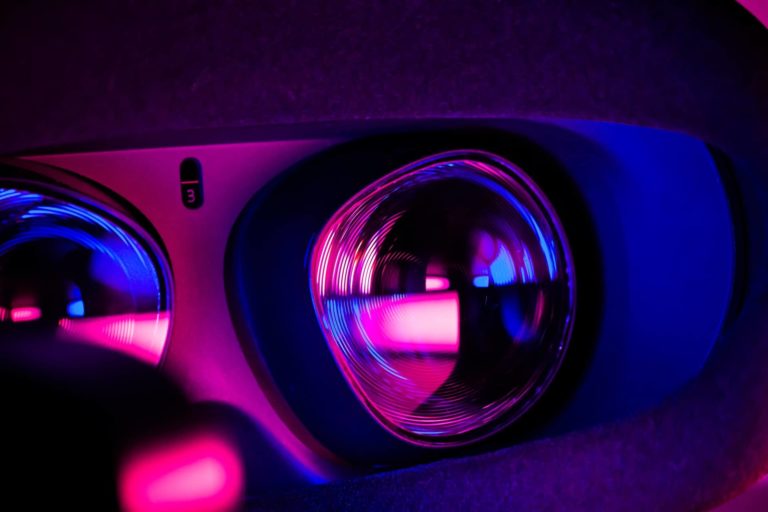
XR is still on the ground floor but not for long. Emerging use cases reach beyond media and entertainment as XR promises to disrupt sectors like healthcare, retail, education, real estate, aerospace, and defense. Market leaders in this space continue investing billions in R&D to push the technology toward mass-market adoption.
When this mass market adoption happens, it will depend on manufacturers’ ability to scale production without sacrificing user experience.
Tech leaders are watching carefully for competitors’ product releases that will comprise the XR landscape. And as release dates slip, it’s clear that many are struggling with the process controls needed to increase yields and test for performance.
Optical advancements aim at improving immersion including spatial-temporal, sensorimotor, cognitive, emotional, and presence (a component of immersion). The most successful XR devices will offer a seamless virtual experience that enables people to naturally socialize, connect, explore, and learn.
For example, diffractive gratings in AR optical systems (the reflective surfaces in AR waveguides that guide light to your eye) are emerging as the methodology of choice for fully-immersive experiences. But these miniature components must be measured at a picometer scale (that’s extremely small).
The ability to measure temporal quality at every stage will impact the timing and success of the XR devices that end up housing these components. It’s critical for user experience, as it quantifies how well the imagery is anchored to the real world. Primary measurements include latency and drifting. Measuring motion to photon latency captures the temporal performance of an XR device, ultimately influencing product success once it hits the market.
Fully immersive experiences depend on optical waveguide parameters that need to be measured and optimized. A few include eye-box location and size, eye-side image, and quality, eye-side MTF, single-shot color, luminance uniformity, FOV, stray light leaking, glare spread, gaze angle, Poynting vector, and pupil swim measurement and correction.
Primary measurements include the FOV and focal length. Interpupillary distance will directly impact AR/VR devices and will be a main consideration. Testing for this measurement requires a system that provides extremely accurate position as well as high-absolute accuracy motion. Devices need testing that mimics the human eye and helps verify they will meet consumer standards, such as IEC 63145-22-10, IEC 63145-20-10, and IEC 63145-20-20, and can be customized to test for device-specific requirements.
Metrology: Lessening Time to Market
Precision robotics-based metrology systems allow for an efficient transition from design to manufacturing. Speed does not have to be a tradeoff for reliability and performance. Automation and robotics ensure that the device achieves consumer standards as display companies move from R&D to full production.
What threads these barriers together is metrology. Precision measurement technologies pinpoint problems from prototype to production, reducing risk and expediting innovation throughout the entire process.
 Pekka Laiho is Chief Business Officer of Commercial Operations at OptoFidelity.
Pekka Laiho is Chief Business Officer of Commercial Operations at OptoFidelity.






